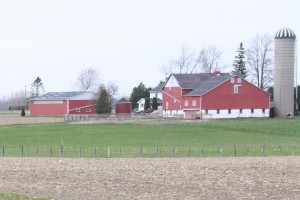by Kelly Daynard
St. Marys - Farmers, by their very natures, are entrepreneurs, always looking for innovative new products to try on their farms or looking at new research to find better ways to care for their livestock and crops.
The Rankin family of St. Marys is a great example of that. In the 1920’s, Dow Rankin was a cheese maker who watched as his cousin became one of the first in Canada to farm mink. At the time, farm or ranch-raised mink was unheard-of. The demand, at the time, was for pelts from mink raised in the wild.
But the Depression brought with it a change in the market and ranch-raised mink began to increase in popularity. Dow started by buying three females (at a time when there were only 600 breeding female animals in all of Canada). By the time Dow’s son, Jim, returned home from college to farm in 1949, he had increased to a herd of 40 females with the herd size increasing significantly in the decades since.

The Rankins are proud Ontario farmers, raising mink.
Today, Jim is retired from the farm that is now managed by the third and fourth generations of his family to live and work there.
Jim’s son, Kirk, said that the path to a career as a third generation mink farmer was, for him, an indirect one. After high school, he pursued a career in forestry with a desire to be a game warden. Yet, when he met his future wife and farm girl Judi, he knew that he’d rather have a life with her in southern Ontario than one on his own in the north. He returned home to farm with his dad and is now thrilled to have sons Jamie and Curtis and nephew Steve working alongside him.
Farm responsibilities have been divided up according to the passions of each of the four. Jamie enjoys managing the intricate art of creating feed rations which have to be changed and balanced depending on the animals’ age. Curtis studied mechanical engineering and spent a short time working at a car plant before his rural roots drew him home. Today’s he has a lot of responsibility for the care of their animals. Steve also tried an off-farm career before returning to the farm in 2004. He especially enjoys maintaining and operating the farm’s equipment.
Read All »
Posted by Farm and Food Care on February 7th, 2014 :: Filed under
Animal care,
animal handling,
Faces of Farming,
Fur farmingTags ::
animal care,
animal welfare,
Faces of Farming,
fur farming,
mink







